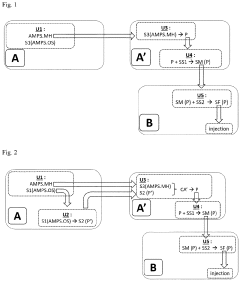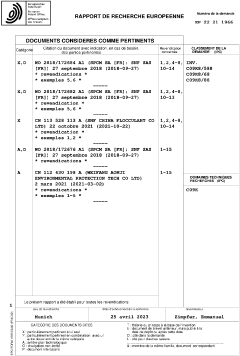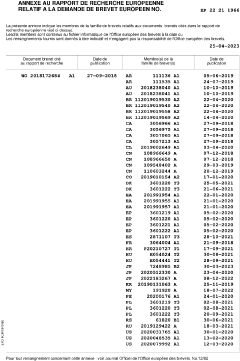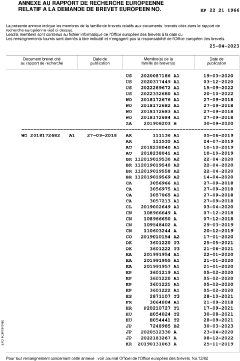Research on advanced polymer reaction engineering techniques for improving polymer properties - Eureka
OCT 8, 20244 MIN READ
Generate Your Technical Report in Patsnap Eureka
AI-Powered Innovation Solution Platform for R&D
Advanced Polymer Reaction Engineering Goals
The primary objective is to explore advanced polymer reaction engineering techniques that can enhance the properties of polymers, such as strength, durability, and functionality. This involves investigating cutting-edge methods for controlling and optimizing polymerization processes, as well as developing novel polymer architectures and compositions.
Key areas of focus include precision polymer synthesis techniques, incorporation of functional groups or nanofillers, and the design of smart or stimuli-responsive polymers. The goal is to unlock new possibilities for polymer materials, enabling their use in demanding applications across various industries, from construction and transportation to biomedical and electronics.
Key areas of focus include precision polymer synthesis techniques, incorporation of functional groups or nanofillers, and the design of smart or stimuli-responsive polymers. The goal is to unlock new possibilities for polymer materials, enabling their use in demanding applications across various industries, from construction and transportation to biomedical and electronics.
Market Demand for Enhanced Polymer Properties
- Growing Demand for Advanced Materials
The demand for polymers with enhanced properties is driven by various industries seeking improved performance, durability, and sustainability. Key sectors include automotive, aerospace, construction, electronics, and packaging. - Emerging Applications
Emerging applications like lightweight composites, smart materials, biomedical devices, and energy storage systems require polymers with tailored properties, such as high strength, thermal stability, and electrical conductivity. - Environmental Concerns
There is a growing emphasis on developing eco-friendly polymers with improved biodegradability, recyclability, and reduced carbon footprint to address environmental concerns and promote sustainability. - Cost Optimization
Enhancing polymer properties can lead to cost savings through improved product lifespan, reduced maintenance requirements, and more efficient manufacturing processes. - Competitive Advantage
Companies that can develop and commercialize advanced polymers with superior properties can gain a competitive edge in their respective markets, enabling product differentiation and capturing new market opportunities.
Current State and Challenges in Polymer Reaction Engineering
- Technological Limitations
Current polymer reaction engineering techniques face challenges in controlling reaction conditions, achieving desired polymer properties, and scaling up processes efficiently. - Monomer Purity Issues
Impurities in monomers can lead to defects in polymer chains, affecting properties and performance. - Reaction Control Difficulties
Precise control over reaction parameters like temperature, pressure, and catalyst concentration is crucial but challenging. - Scale-up Challenges
Transitioning from lab-scale to industrial-scale production often leads to issues with heat transfer, mixing, and product consistency. - Characterization Limitations
Existing analytical techniques may not provide comprehensive insights into polymer microstructure and properties.
Evolution of Polymer Reaction Engineering Techniques

Existing Solutions in Polymer Reaction Engineering
01 Polymer reaction engineering
Modifying reaction conditions, using specific catalysts/additives, and controlling reaction parameters to improve polymer properties like molecular weight, crystallinity, or thermal stability.- Polymer reaction engineering: Optimizing reaction conditions, using specialized catalysts/initiators, incorporating additives/modifiers, and employing specific polymerization processes to improve polymer properties.
- Polymer modification: Chemically or physically modifying polymers through grafting, blending, crosslinking, or introducing functional groups to enhance specific properties like strength, stability, conductivity, or surface characteristics.
- Polymer composites and blends: Combining polymers with fillers, reinforcements, or compatibilizers to create composites or blends with improved mechanical, thermal, electrical, or barrier properties.
- Polymer property prediction: Computational methods and modeling techniques to predict and optimize polymer properties based on chemical structure, composition, and processing conditions, aiding in polymer design.
- Specialized polymer synthesis: Obtaining polymers with unique properties through specialized synthesis techniques like ring-opening polymerization, controlled radical polymerization, or using specific monomers or functional groups.
02 Polymer modification
Chemically or physically modifying polymers through grafting, blending, or incorporating additives to enhance properties like mechanical strength, thermal resistance, or conductivity.03 Polymer property prediction
Computational methods and modeling techniques to predict and optimize polymer properties based on chemical structure, composition, and processing conditions, aiding in polymer design.04 Polymer synthesis
Obtaining polymers with improved properties through controlled synthesis techniques like living polymerization, ring-opening polymerization, or post-polymerization modifications.05 Polymer composites and blends
Combining polymers with fillers, nanoparticles, or other polymers to create composites or blends with enhanced mechanical, thermal, or electrical properties.
Key Players in Polymer Engineering Industry
The competitive landscape for advanced polymer reaction engineering techniques is characterized by a mix of established industry leaders and academic institutions. Companies like China Petroleum & Chemical Corp., Chevron Phillips Chemical Co. LP, and BASF AB are key players, indicating a high level of industry interest and investment in this technology. The market is in a growth phase with significant potential for expansion, driven by the need for improved polymer properties.
China Petroleum & Chemical Corp.
Technical Solution: China Petroleum & Chemical Corp. focuses on catalytic polymerization processes to enhance polymer properties like tensile strength, thermal stability, and chemical resistance.
Strength: High expertise in catalytic processes. Weakness: Limited application diversity.
Chevron Phillips Chemical Co. LP
Technical Solution: Chevron Phillips Chemical Co. LP focuses on metallocene catalyst technology to produce polymers with superior mechanical properties like enhanced elasticity and toughness.
Strength: Superior mechanical properties. Weakness: Complex catalyst handling.
Core Innovations in Polymer Reaction Techniques
Method of injecting an aqueous polymer solution into a subterranean formation
PatentPendingEP4382584A1
Innovation
- Improved polymer properties for enhanced oil or gas recovery techniques
- Polymer reaction engineering techniques for modifying polymer properties
Regulatory Landscape for Polymer Engineering
Polymer reaction engineering techniques have evolved significantly to enhance polymer properties. Key advancements include controlled radical polymerization methods for precise molecular weight and architecture control, and the use of novel catalysts and reaction media for improved selectivity and sustainability. Market demand for high-performance polymers with tailored properties is driving innovation in areas like living polymerization, click chemistry, and enzymatic polymerization. Overcoming challenges like controlling complex reaction kinetics and developing greener processes will be crucial for future breakthroughs. Potential directions include integrating machine learning for process optimization, exploring renewable feedstocks, and developing hybrid materials through innovative polymerization techniques.
the structure of the environmentally friendly knitted fabric provided by the present invention; figure 2 Flow chart of the yarn wrapping machine for environmentally friendly knitted fabrics and storage devices; image 3 Is the parameter map of the yarn covering machine
Login to View More Sustainability Considerations in Polymer Engineering
Polymer reaction engineering techniques play a crucial role in enhancing polymer properties and enabling advanced material applications. Recent advancements in this field have focused on developing precise control mechanisms over polymerization processes, enabling tailored polymer architectures and functionalities. Key innovations include controlled radical polymerization methods, such as atom transfer radical polymerization (ATRP) and reversible addition-fragmentation chain transfer (RAFT) polymerization, which allow for precise control over molecular weight, composition, and architecture. Additionally, advances in flow chemistry and continuous manufacturing processes have enabled improved process efficiency, scalability, and product consistency. Emerging areas of interest include the integration of machine learning and artificial intelligence for process optimization, as well as the development of sustainable and environmentally friendly polymerization techniques utilizing renewable feedstocks and green solvents.
the structure of the environmentally friendly knitted fabric provided by the present invention; figure 2 Flow chart of the yarn wrapping machine for environmentally friendly knitted fabrics and storage devices; image 3 Is the parameter map of the yarn covering machine
Login to View More If you want an in-depth research or a technical report, you can always get what you want in Patsnap Eureka TechResearch . Try now!



